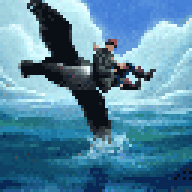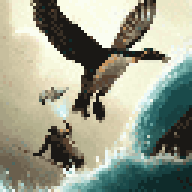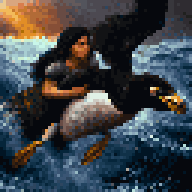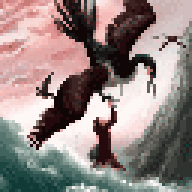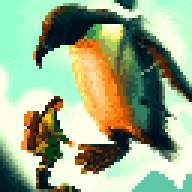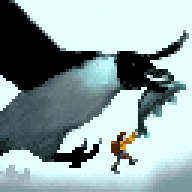Giant Auks
In a world unlike ours, on a remote island in the middle of the ocean, there lived a species of birds that were unlike anything seen before. These were the giant flying auks, and they were massive, with wingspans so wide that they could easily cover an entire football field.
The giant flying auks were a sight to behold, with feathers as black as coal and eyes that glinted in the sun. They were gentle creatures, spending their days soaring through the skies and gliding over the waves of the sea.
Despite their impressive size, the giant flying auks were graceful in flight, and they moved with a fluidity that was almost hypnotic to watch. Their wings made a whooshing sound as they beat against the air, and their calls echoed across the island, a deep, melodic sound that was both eerie and beautiful.
People came from all over the world to witness the spectacle of the giant flying auks. Some thought them to be mythological creatures, while others believed them to be aliens from another planet.
But no one could deny the awe-inspiring sight of the giant birds, and they became a symbol of peace and beauty in a world that was often filled with chaos and turmoil.
As time went on, the giant flying auks became known as the guardians of the skies, and their legend grew. People would come to the island to catch a glimpse of them, and some even claimed to have seen them on their travels across the ocean.
Though they were a marvel to behold, the giant flying auks remained a mystery, and their secrets were never fully understood. But to those who witnessed them, they were a reminder of the wonders of the world and the limitless possibilities that lay ahead.
